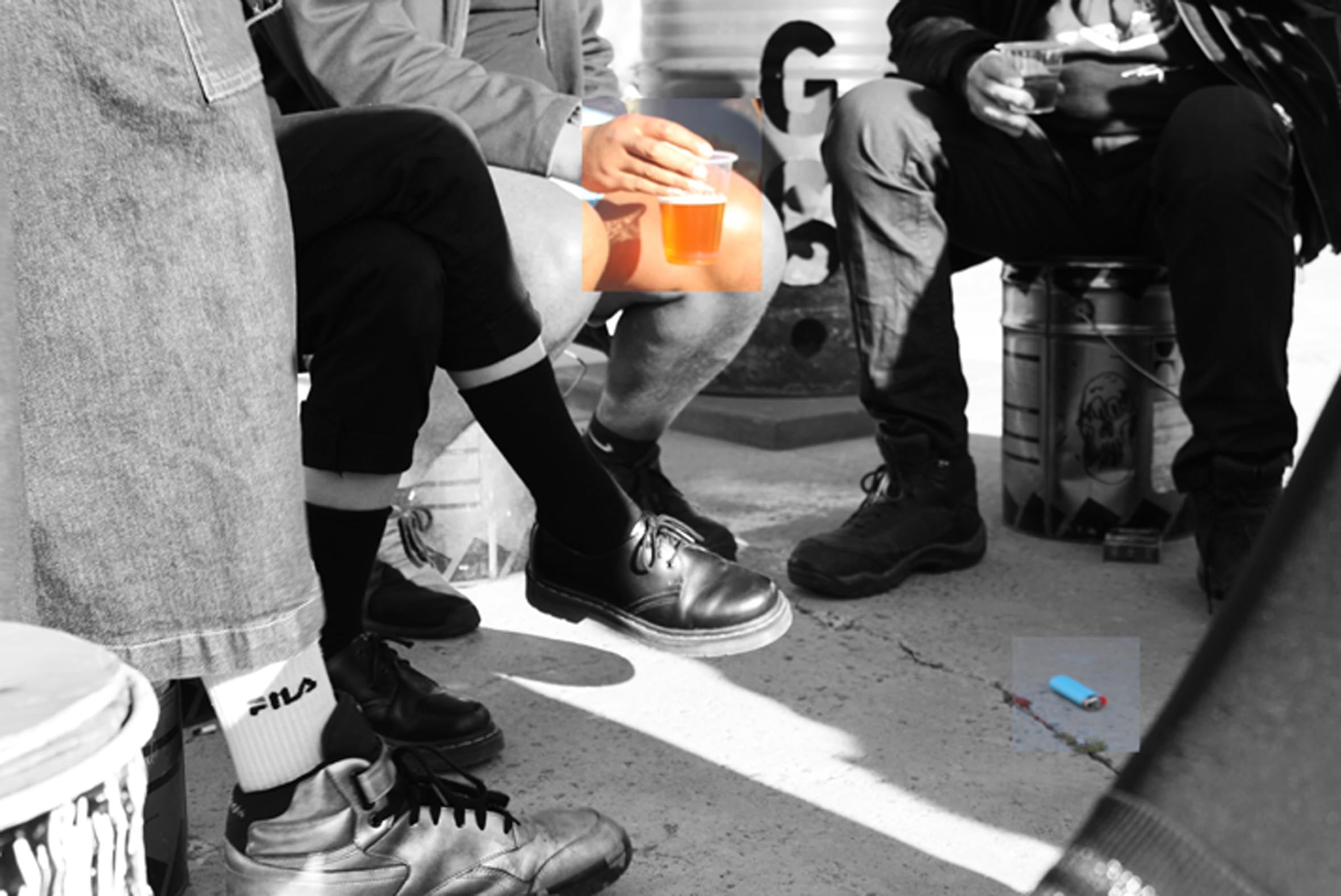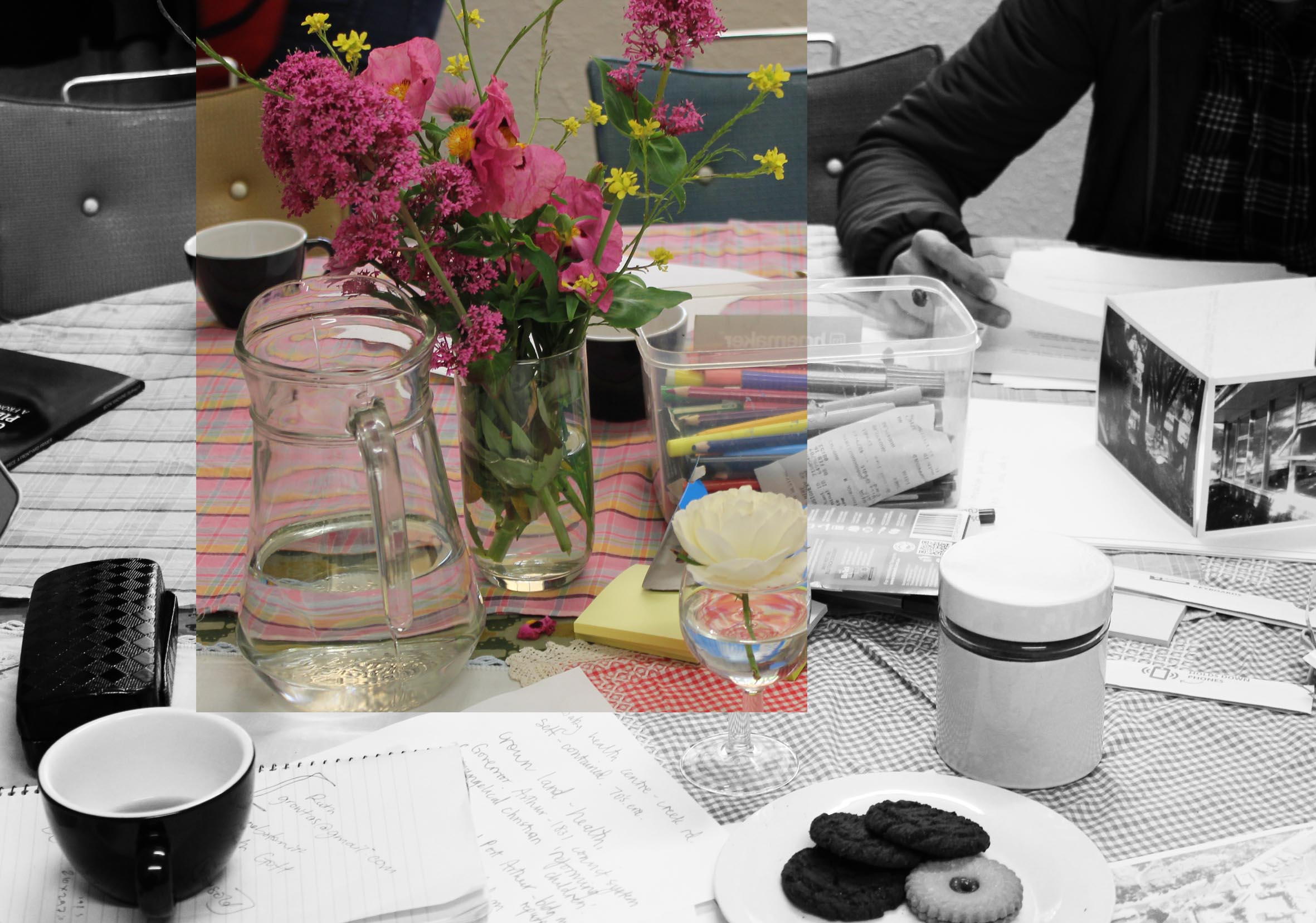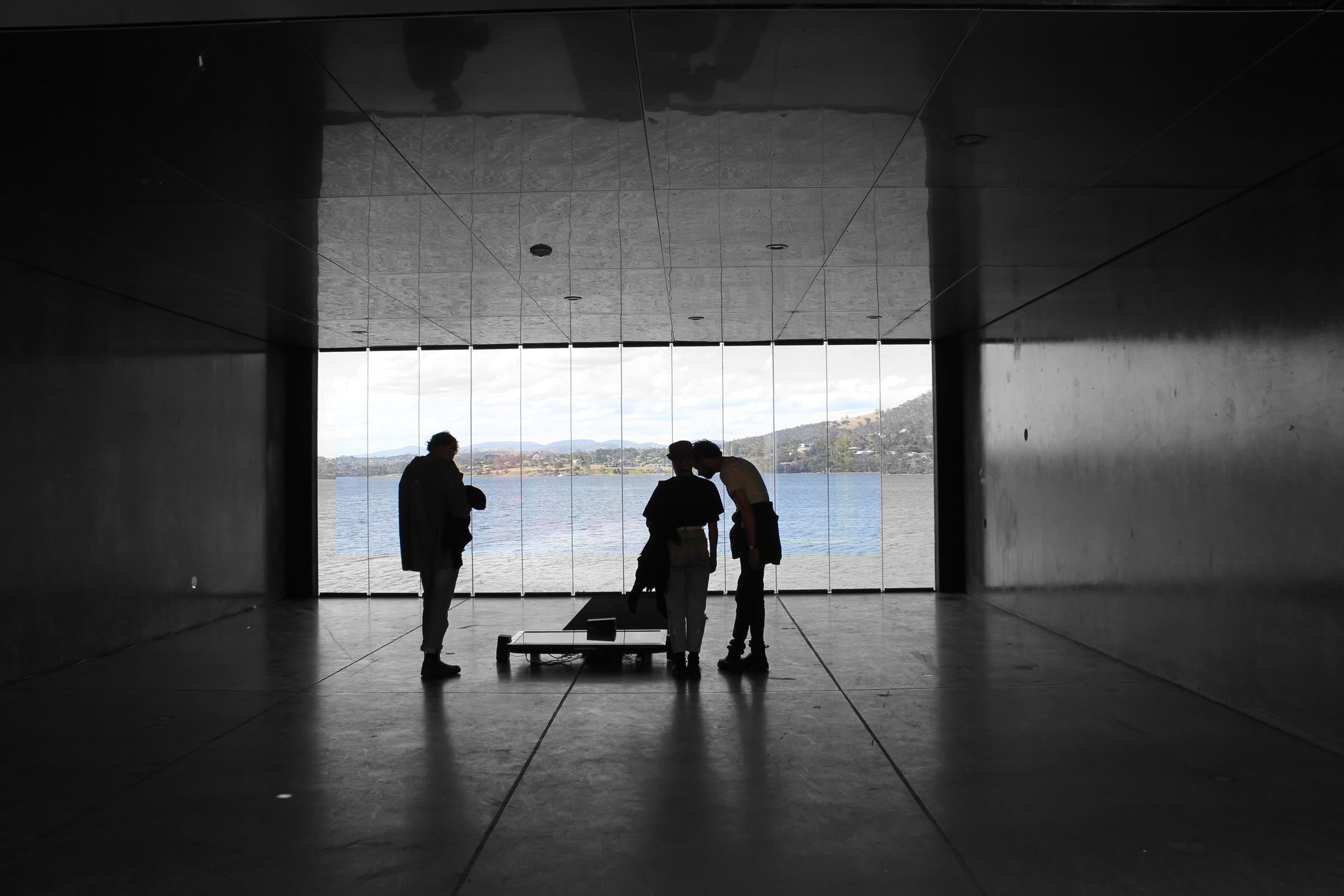


For a week now I’ve had a file saved to my computer titled ‘Notes on Hobiennale 2017’. It contains fragments of thoughts, passages copied out from gallery room sheets, quotes from artist and curator talks, headings in caps lock with no writing yet to follow – ECOLOGY, CULT, SITE, WALKING. The list goes on. I need to begin to fill in the blanks beneath. How do you write experience?
HB 17
Short for HOBIENNALE 2017, HB 17 is a festival of art, talks, readings, parties and music, facilitated by CONSTANCE, Hobart’s own artist-run initiative. Everything is free and there is a lot to see. The festival brings together artist-run-initiatives (ARIs) from all over Australia and New Zealand who have been invited to curate shows across different sites and spaces in Hobart.
NOVEMBER 3
Friday night marks the official opening of HOBIENNALE 2017, kicking off at Contemporary Arts Tasmania. There’s a keg of beer, speeches by the curators Grace Herbert and Liam James, cheese and crackers. And of course, there’s art. How can you tell for sure? As I circle the gallery I clutch at the room sheet, with an italicised quote from Francois Hers I recall partially: ‘Artworks help us find our bearing.’ There are glory holes drilled into the floor of the gallery and a Welcome to Country that makes me think about the stories we hold onto, and the stories we tell through art.
PERFORMANCE
I follow Arini Byng’s performance work Before Taking Any Action (2017) as it travels from the Tasmanian Museum and Art Gallery (TMAG) along Hobart’s foreshore to Salamanca. There are five performers, their bodies hugged by the thin plastic of opaque white ponchos. I am not sure if these outfits are part of the performance or due to the unpredictable nature of Hobart’s weather. Byng follows behind, her camera lens wrapped in what I assume is the same plastic-poncho cloaking the performers. She snaps photograph after photograph as the performers move through car parks, across pedestrian crossings, down jetty ramps and back up again. It is an awkward and sometimes graceful collusion of choreographed stumble and dance centred around a cut-out object, of which I can’t quite grasp the shape, except to see it has both soft edges and hard. The performers pass the row of floating fish and chip restaurants (a regular haunt – or so I’m told – of art school students during semester) and pre-teen kids doing wheelies on their mud-crusted BMX bikes. I hope Byng catches this on her camera.
At this point I commence an internal debate of whether to buy hot chips or not. It seems somewhat against the rules of art to eat hot chips whilst watching a contemporary performance piece, so reluctantly I decide against. Amidst this to-and-fro of thought I check my phone. My partner has called five times, along with my mum, and left a string of texts and voicemails. Everyone is asking, ‘Where are you?’
Byng says: ‘We can see or touch parts of our body; we always see some side of it, but we can never grip the wholeness of it.’
SIGNAL
I call my mum, but when she picks up I can’t speak. Leaning against the wind, I want to, but can’t, spit out words fast and heavy like the rain on the water before me. What is the fear of words?
I cannot speak because I know something is wrong. I feel it before I know what is happening. Is there a word for that? I felt it standing in front of Grace Marlow and Anna Gore’s collaborative works as part of SISTER’s (South Australia) show in the disused Cinema One. Although in this case it wasn’t fear I felt before the words came but a pull, a tug. I’m caught off guard.
Through the tiny microphone of my mobile phone I hear the broken and small voice of my mum tell me that my grandma is dying. I stumble on and catch up to Byng’s Before Taking Any Action.
ARI
An acronym for artist-run initiatives. ARIs are organisations run from the ground up; in other words, grassroots and (mostly) unpaid labour. The HOBIENNALE is all about the ARI. It is a place to make connections and friends and network. The air is filled with solidarity and goodwill. And lots of ARI members.
During a panel discussion, Liam James says that working as part of an ARI means you ‘learn how to use a drill at the same time as how to read a contract so you don’t get screwed over by property agents’.
CHAOS
After the call from my mum everything falls into some sort of moving chaos. It reminds me of Nicci Haynes’ stop motion film In my drawing costume (2017), screening in Surface World, Australian National Capital Artists (ANCA) exhibition. In the work, Haynes’ body moves backwards, forwards, sideways and every which ways. She is flopping and jolting in some sort of over-sized, all-black onesie. Scribbles, smudges and pencil lines follow the movement of her body. It is a mesmerising work and I stand there for… I don’t know how long, watching the film over and over again.
I book flights to Sydney and call work to let them know. I selfishly find myself thinking how I will be able to write about this festival that I will not see and experience in its entirety. My thoughts loop around like Haynes’ scribbles across the screen – smudges, rubbed out and drawn again, becoming increasingly threadbare and chaotic with time. I cannot capture everything.
SPACE
ARIs provide the space and platform for experimental and emerging artists. During the HOBIENNALE I begin reading about ARIs and thinking a lot about what they are, how they do what they do and why. There doesn’t seem to be a definitive answer to any of my questions. The word ecology surfaces every so often. In an open letter on Runway’s website from ARIs, about recent funding cuts, I read, ‘It’s important to acknowledge that excellence isn’t always achieved on the first attempt.’1
COMMUNITY
On Sunday I cycle out to Kickstart Arts Centre in Moonah where FRONTYARD (New South Wales) founders Julia Bavyka, Connie Anthes, and Alexandra Crosby are seated around a table covered with paper and pens, laptops, photographs, a vase of picked flowers and cups of tea. I plonk onto a seat whilst Alex leaves the room to make a fresh pot of tea and returns with a plate of Arnott’s biscuits. Across the table they tell me about FRONTYARD, a Not-Only-Artist Run Initiative that usually operates out of a space on Illawarra Road in Sydney’s Marrickville. They’ve brought with them their red teapot and archive – consisting of photographs from their Flickr – recording moments of community engagement, practical skill sharing and conversations over cups of tea. I like being there at the table where ideas, stories and thoughts follow on from one another in an unexpected and fragmentary way.
FRAGILITY
On Wednesday morning my sister and I arrive in Oberon where my grandma has lived for the past seventy years. My grandma has always been a small woman, but she looks even smaller, her body sinking into the corners of her chair. She drinks the chocolate milk my mum has brought.
There must be something about the colour of the paint on the walls in the nursing home – shades of green and pink – that remind me of an upstairs room in Domain House where Northland, a collaboration between THE CURATED SHELF and RADIO 33, is installed. I unfold the accompanying text by Andrew Harper Signal to Noise and read: ‘Missions and quests do not become easier: the wasteland is still the wasteland. But something is enriched, and the player (you) runs into the irradiated desolation enriched and alive.’ Unlike the nursing home, here the paint is peeling like festering skin and Eloise Kirk’s objects of ply and resin and welded metal are scattered across the floor. RADIO 33 broadcasts fill the air. I feel like I’ve stepped into the upside down world. Or maybe I’ve been watching too much Stranger Things.
SURFACES
At Domain House, I slump into a beanbag I watch SODA JERK’s video work After the Rainbow (2009) and I think about my mum again. The Wizard of Oz was, and I believe still is, one of her favourite films. I watch as Dorothy, a young Judy Garland, sees her older self.
SITE/SIGHT
I’ve been working on this essay in fragments, across three different notebooks and a handful of yellow index cards that float between my pockets and bedside table. Writing down things helps work through thoughts. But again and again I return to the question of, how does one write experience? And how can I write of all that I have seen and felt? There is possibility within the incomplete.
The HOBIENNALE is a festival that operates interstitially. Unused and under-used spaces are inhabited by ARIs during the ten-day period – an art park by the River Derwent, the basement beneath a floor of taxidermied animals, a community centre that once operated as an orphanage, a disused cinema. The HOBIENNALE experience feels distinct from other art festivals – the conversations in between the art itself and the exhibition sites are just as much part of it all.
UMM…
It becomes difficult to recall experiences and reactions. I should have taken more notes. I look for what I wrote after walking through Makiko Yamamoto’s work at TMAG and listening to the artist talk but all I can find is an index card with the show’s title: Utterly Silent, Utter Silence, Utterly Something, Thinking Thinking, Utterly Listening, Utterly Umm…
CONVERSATIONS
When I think about the HOBIENNALE, mostly what remains, what is left over, are the conversations. The conversations and the questions that arose out of them. We need art festivals like HOBIENNALE because it brings people (and not always artists) together, and encourages dialogue around the state of the arts in Australia today, or the incidental poetry of the wind, or what dreams we had last night. Some conversations are fleeting and momentary, not supposed to be remembered. But there are those conversations that stick, mould new ideas and spark change.
NOVEMBER 10
Sitting in my grandma’s room in Oberon with my mother and sister, we chat about all sorts. It might be the last time I see my grandma, and whilst we may not talk about anything particularly important, they are conversations felt, and will be felt, a long time from now.
Vivienne Cutbush writes, reads, makes and bakes.
